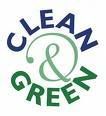Chemicals in Baby Products Raise Concern
Monday, February 4, 2008
By LINDSEY TANNER AP Medical WriterCHICAGO (AP) — Baby shampoos, lotions and powders may expose infants to chemicals that have been linked with possible reproductive problems, a small study suggests.
The chemicals, called phthalates, are found in many ordinary products including cosmetics, toys, vinyl flooring and medical supplies. They are used to stabilize fragrances and make plastics flexible.
In the study, they were found in elevated levels in the urine of babies who'd been recently shampooed, powdered or lotioned with baby products.
Phthalates (pronounced thowl-ates) are under attack by some environmental advocacy groups, but experts are uncertain what dangers, if any, they might pose. The federal government doesn't limit their use, although California and some countries have restricted their use.
Animal studies have suggested that phthalates can cause reproductive birth defects and some activists believe they may cause reproductive problems in boys and early puberty in girls.
Rigorous scientific evidence in human studies is lacking. The current study offers no direct evidence that products the infants used contained phthalates, and no evidence that the chemicals in the babies' urine caused any harm. Still, the results worried environmental groups that support restrictions on these chemicals.
"There is an obvious need for laws that force the beauty industry to clean up its act," said Stacy Malkan of Health Care Without Harm.
The study's lead author, Dr. Sheela Sathyanarayana, a University of Washington pediatrician, said, "The bottom line is that these chemicals likely do exist in products that we're commonly using on our children and they potentially could cause health effects."
Babies don't usually need special lotions and powders, and water alone or shampoo in very small amounts is generally enough to clean infant hair, Sathyanarayana said.
Concerned parents can seek products labeled "phthalate-free," or check labels for common phthalates, including DEP and DEHP.
But the chemicals often don't appear on product labels. That's because retail products aren't required to list individual ingredients of fragrances, which are a common phthalate source.
The Food and Drug Administration "has no compelling evidence that phthalates pose a safety risk when used in cosmetics," spokeswoman Stephanie Kwisnek said. "Should new data emerge, we will inform the public as well as the industry."
The federal Centers for Disease Control and Prevention says the health effects in humans are uncertain.
"Although several studies in people have explored possible associations with developmental and reproductive outcomes (semen quality, genital development in boys, shortened pregnancy, and premature breast development in young girls), more research is needed," a 2005 CDC report said.
The new study, which appears in February's issue of the journal Pediatrics, involved 163 babies. Most were white, ages 2 to 28 months and living in California, Minnesota and Missouri.
The researchers measured levels of several phthalates in urine from diapers. They also asked the mothers about use in the previous 24 hours of baby products including lotions, powders, diaper creams and baby wipes.
All urine samples had detectable levels of at least one phthalate, and most had levels of several more. The highest levels were linked with shampoos, lotions and powders, and were most prevalent in babies younger than 8 months.
John Bailey, chief scientist at the Personal Care Products Council, questioned the methods and said the phthalates could have come from diapers, lab materials or other sources.
"Unfortunately, the researchers of this study did not test baby care products for the presence of phthalates or control for other possible routes of exposure," Bailey said.
———
Pediatrics: www.pediatrics.org
FDA: www.cfsan.fda.gov/dms/cos-phth.html.com
Source:http://embarqmail.com/news/news_reader.php?storyid=15792545&feedid=248


















Leave your response